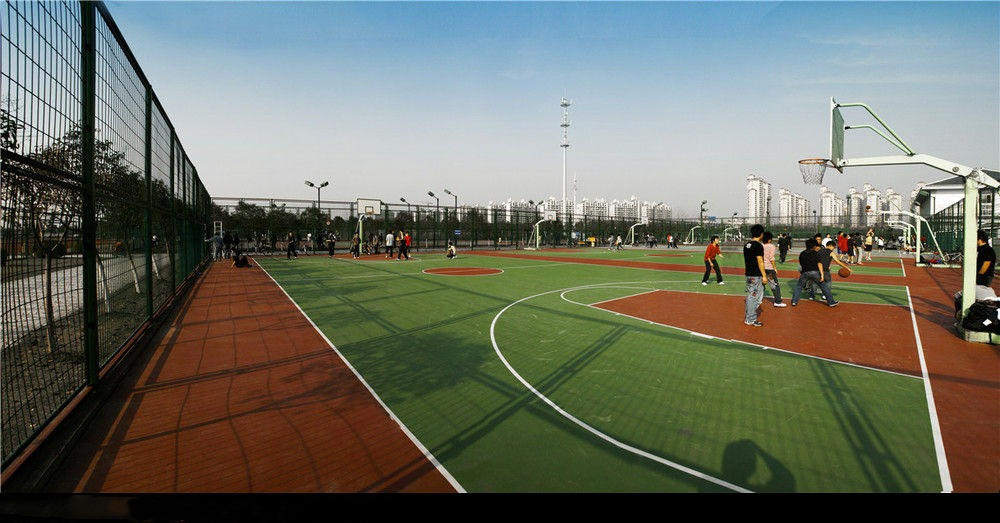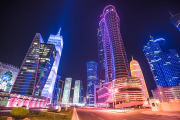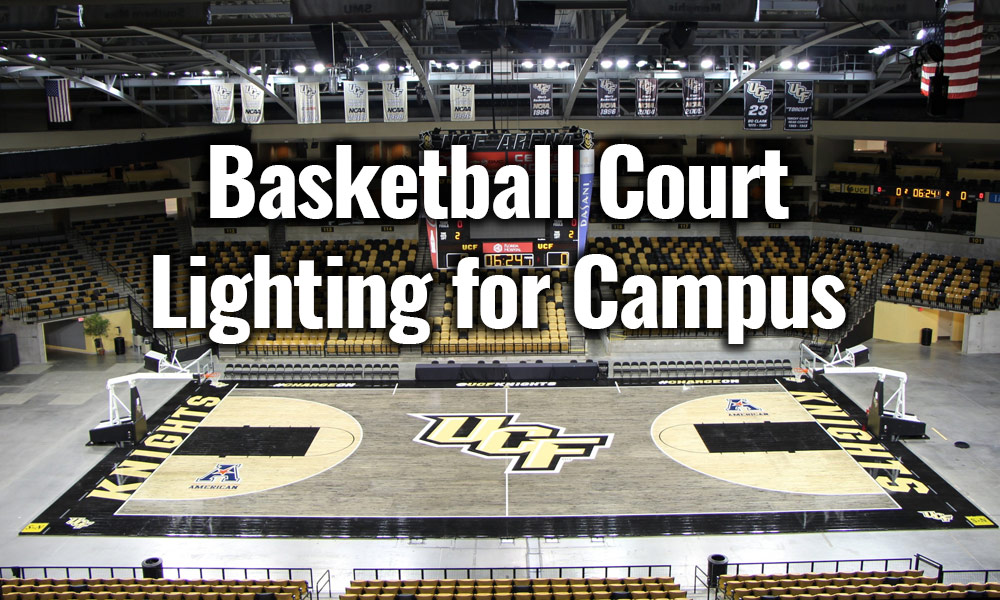
Basketball originated in Springfield College, Massachusetts, USA on December 25, 1891. It was designed and invented by the college’s physical education teacher James Naismith. The birth and development of basketball has always been accompanied by the development of the campus. Basketball culture is within the specific environment of the campus. Through the selection and reconstruction of the campus culture, while continuously building and improving itself, the campus culture and basketball are aggregated. The intersection of cultures makes basketball writing an important part of campus culture. Campus basketball culture refers to the sum of the material wealth and spiritual wealth of basketball created by taking campus as a space, taking students and teachers’ participation as the main body, and taking basketball as the main content and sports means. It shows a unique form of campus Student group cultural life.
Basketball court specifications
 The basketball court is a rectangular solid surface. The basketball court is 28 meters long and 15 meters wide without obstacles. Basketball courts include soil, cement, asphalt, and wood. The current use of plastic grounds in basketball arenas. Soil, cement and asphalt sites are relatively economical, and universities and grass-roots units are more used, but the ground should be level to prevent injuries. The appropriate department of the FIBA has the right to approve existing courses within the following size ranges: 4 meters in length and 2 meters in width, as long as the changes are proportional to each other. Ceiling or lowest obstacle property height is at least 7 meters. The court should be evenly lit and have sufficient light. The placement of lighting equipment shall not impede the vision of the team members. The size of all new stadiums currently in line with the requirements of the FIBA main official games.
The basketball court is a rectangular solid surface. The basketball court is 28 meters long and 15 meters wide without obstacles. Basketball courts include soil, cement, asphalt, and wood. The current use of plastic grounds in basketball arenas. Soil, cement and asphalt sites are relatively economical, and universities and grass-roots units are more used, but the ground should be level to prevent injuries. The appropriate department of the FIBA has the right to approve existing courses within the following size ranges: 4 meters in length and 2 meters in width, as long as the changes are proportional to each other. Ceiling or lowest obstacle property height is at least 7 meters. The court should be evenly lit and have sufficient light. The placement of lighting equipment shall not impede the vision of the team members. The size of all new stadiums currently in line with the requirements of the FIBA main official games.
Lighting standards for basketball courts at all levels
 Basketball court equipment is also classified, such as basketball court lighting. Industry standards (International Lighting Association) are divided into 6 categories: training and entertainment activities, amateur games / professional training, professional games, TV broadcast national / international games, TV broadcast Major international competitions, HDTV broadcast major international competitions.
Basketball court equipment is also classified, such as basketball court lighting. Industry standards (International Lighting Association) are divided into 6 categories: training and entertainment activities, amateur games / professional training, professional games, TV broadcast national / international games, TV broadcast Major international competitions, HDTV broadcast major international competitions.
Ⅰ (training and entertainment activities) basketball court lighting standards comply with externally operated basketball courts, basketball courts in primary and secondary schools, internal company basketball courts Ⅰ (training and entertainment activities) basketball court lighting standards require a horizontal average illumination of 300lux, uniform The degree requirements are not high.
Ⅱ (amateur / professional training) basketball court lighting standards meet high-level externally operated basketball courts, college basketball courts, county-level public basketball courts, and internal company advanced basketball courts Ⅱ (amateur / professional training) basketball courts The lighting standard requires a horizontal average illuminance of 500 lux, which requires higher uniformity.
Ⅲ (professional games) basketball court lighting standards meet the competition organized by the provincial and municipal sports single sports associations, with professional or professional athletes participating. III (professional games) basketball court lighting standards require a horizontal average illumination of 750lux, uniformity requirements Very high.
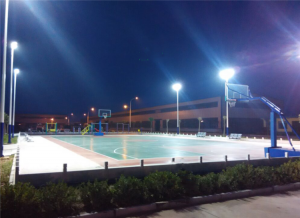 Ⅳ (TV broadcast national / international competitions) The basketball court lighting standards comply with international invitational tournaments, general international individual events, general intercontinental individual events, international tournaments, national youth games, ethnic minority games, domestic general events, domestic individual events, Games, etc., that is, major countries, international competitions outside the scope of international competitions. Ⅳ (TV broadcast national / international matches) Basketball court lighting should fully consider the requirements of camera contrast, and the broadcast requires many cameras to work at the same time. For the broadcast of a basketball game, the main cameras need to be set on the stands on both sides of the field; the auxiliary cameras are placed on both ends of the field and used as close-ups of athletes’ basketball areas. The requirements for the illuminance in the direction of the primary camera and the requirements for the vertical illuminance in the direction of the secondary camera will be different, respectively 1000lux and 750lux. There are also certain requirements for the uniformity of illuminance in the vertical direction.
Ⅳ (TV broadcast national / international competitions) The basketball court lighting standards comply with international invitational tournaments, general international individual events, general intercontinental individual events, international tournaments, national youth games, ethnic minority games, domestic general events, domestic individual events, Games, etc., that is, major countries, international competitions outside the scope of international competitions. Ⅳ (TV broadcast national / international matches) Basketball court lighting should fully consider the requirements of camera contrast, and the broadcast requires many cameras to work at the same time. For the broadcast of a basketball game, the main cameras need to be set on the stands on both sides of the field; the auxiliary cameras are placed on both ends of the field and used as close-ups of athletes’ basketball areas. The requirements for the illuminance in the direction of the primary camera and the requirements for the vertical illuminance in the direction of the secondary camera will be different, respectively 1000lux and 750lux. There are also certain requirements for the uniformity of illuminance in the vertical direction.
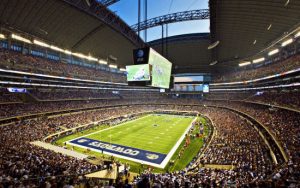 Ⅴ (Broadcast major national / international competitions) The lighting standards of basketball courts are in accordance with the competitions organized by the International Olympic Committee and various types of competitions organized by the International Olympic Committee recognized by the International Olympic Committee (such as the Olympic Games, World Championships, World Cup, Intercontinental) Cups and corresponding qualifiers, etc.) and competitions organized by the General Administration of Sport of China (Chinese Olympic Committee), and various competitions organized by national single sports organizations recognized by the General Administration of Sports (Chinese Olympic Committee) (such as National Games, National Individual Events Tournaments, national single leagues, etc.). The requirements for the illuminance in the direction of the main camera and the vertical illuminance in the direction of the auxiliary camera are 1400lux and 1000lux, respectively. There is also a high requirement for the uniformity of the illuminance in the vertical direction.
Ⅴ (Broadcast major national / international competitions) The lighting standards of basketball courts are in accordance with the competitions organized by the International Olympic Committee and various types of competitions organized by the International Olympic Committee recognized by the International Olympic Committee (such as the Olympic Games, World Championships, World Cup, Intercontinental) Cups and corresponding qualifiers, etc.) and competitions organized by the General Administration of Sport of China (Chinese Olympic Committee), and various competitions organized by national single sports organizations recognized by the General Administration of Sports (Chinese Olympic Committee) (such as National Games, National Individual Events Tournaments, national single leagues, etc.). The requirements for the illuminance in the direction of the main camera and the vertical illuminance in the direction of the auxiliary camera are 1400lux and 1000lux, respectively. There is also a high requirement for the uniformity of the illuminance in the vertical direction.
Ⅵ (HDTV broadcast major national / international competitions) basketball court lighting standards meet the Olympics, World Championships, World Cup, Intercontinental Cups (football, basketball, volleyball, table tennis, swimming and diving, badminton, etc.), National Games, etc., or broadcast on TV Institutions and events require other events identified. The requirements for the illuminance in the main camera direction and the vertical illuminance in the auxiliary camera direction are 1400lux and 1000lux, respectively. There is also a very high requirement for the uniformity of the illuminance in the vertical direction.
Factors to consider in basketball court lighting
1. Illumination of basketball court
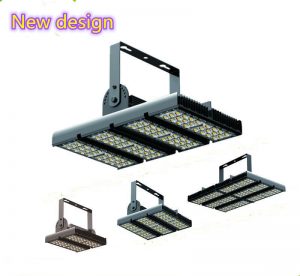 To achieve a horizontal average illumination of 300 lux for a basketball court, 12 280W are required. These 12 basketball court lighting fixtures are installed on 10-meter-high light poles. At this time, if all lights are on, the total power is 3360W. If the price of electricity is 1.5 yuan per degree, then if the light is turned on for one hour, the electricity is 3 to 4 yuan, which is about 80 to 150 per hour charged by the venue the cost is not expensive. However, the initial investment cost is large, and the return time is very long, so now it is popular to make the illumination of the basketball court lighting around 150lux and 200lux.
To achieve a horizontal average illumination of 300 lux for a basketball court, 12 280W are required. These 12 basketball court lighting fixtures are installed on 10-meter-high light poles. At this time, if all lights are on, the total power is 3360W. If the price of electricity is 1.5 yuan per degree, then if the light is turned on for one hour, the electricity is 3 to 4 yuan, which is about 80 to 150 per hour charged by the venue the cost is not expensive. However, the initial investment cost is large, and the return time is very long, so now it is popular to make the illumination of the basketball court lighting around 150lux and 200lux.
2. Light quality and effect
Basketball court lighting design, with energy saving and emission reduction, green lighting as its purpose. Identify and choose professional basketball court lighting with advanced technical performance and excellent quality. By optimizing lighting design and scientific lighting. Achieve the highest basketball court lighting quality and effect with the smallest investment in court lighting.
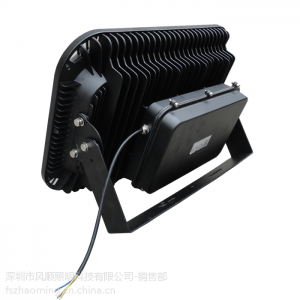 Because most basketball courts are multifunctional and comprehensive, the lighting design should be able to meet the lighting requirements of other forms of cultural and sports activities, as well as the requirements of lighting quality for photography and video. Because the basketball court is divided into two areas, the sports area and the stands, the two areas are also treated separately when designing the basketball court lighting. That is: a multi-functional sports area, independently designing a stadium lighting solution that can meet various sphere sports. A stand-alone lighting scheme was designed in the stands area. However, the overall lighting quality and effect goals of the entire basketball court are consistent. Basketball court lighting uniform horizontal illumination: The basketball court lighting layout must not only achieve a certain level of horizontal illumination, but also uniform illumination. Avoid lighting in the sports area of the basketball court. The lighting of the entire basketball court achieves the lighting effect commonly referred to as the “shadowless lamp”.
Because most basketball courts are multifunctional and comprehensive, the lighting design should be able to meet the lighting requirements of other forms of cultural and sports activities, as well as the requirements of lighting quality for photography and video. Because the basketball court is divided into two areas, the sports area and the stands, the two areas are also treated separately when designing the basketball court lighting. That is: a multi-functional sports area, independently designing a stadium lighting solution that can meet various sphere sports. A stand-alone lighting scheme was designed in the stands area. However, the overall lighting quality and effect goals of the entire basketball court are consistent. Basketball court lighting uniform horizontal illumination: The basketball court lighting layout must not only achieve a certain level of horizontal illumination, but also uniform illumination. Avoid lighting in the sports area of the basketball court. The lighting of the entire basketball court achieves the lighting effect commonly referred to as the “shadowless lamp”.
3. Requirements for light
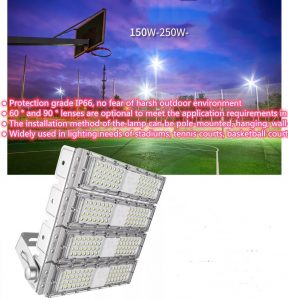 In basketball court lighting design, to make athletes accurately judge the ball, height and landing point, first of all, make the most of the lights. The effect of the light should be good, to prevent glare, to be as soft as possible and not to be dazzling, and not to let too strong light directly or reflect into the eyes. This is very important not only for the athletes to achieve excellent results, but also for the accurate judgment of the referees and the appreciation of the audience. Generally speaking, the lighting of the basketball court is required to be about 8m, about 2m from the bottom line and the sideline: the light is evenly distributed and the light is sufficient. The light quality mainly depends on the illumination level, illumination uniformity, and the degree of glare control. The degree of glare produced by a lamp depends on the lamp’s density, projection direction, and miles. By controlling the light beam, the purpose of high illumination and low glare is achieved. To avoid glare to the athletes and spectators, the lights should be evenly distributed, soft and not dazzling.
In basketball court lighting design, to make athletes accurately judge the ball, height and landing point, first of all, make the most of the lights. The effect of the light should be good, to prevent glare, to be as soft as possible and not to be dazzling, and not to let too strong light directly or reflect into the eyes. This is very important not only for the athletes to achieve excellent results, but also for the accurate judgment of the referees and the appreciation of the audience. Generally speaking, the lighting of the basketball court is required to be about 8m, about 2m from the bottom line and the sideline: the light is evenly distributed and the light is sufficient. The light quality mainly depends on the illumination level, illumination uniformity, and the degree of glare control. The degree of glare produced by a lamp depends on the lamp’s density, projection direction, and miles. By controlling the light beam, the purpose of high illumination and low glare is achieved. To avoid glare to the athletes and spectators, the lights should be evenly distributed, soft and not dazzling.
Lamp and light source selection
 Stadium lighting generally uses 6 sets of 400W LED lights, but due to the serious light decay of the lamps and short life of the light source, the school repairs at least twice a year, but there will still be lamp failure or damage. The school hopes to adopt a complete set of lighting solutions to provide teachers and students with a good lighting environment on the basis of no less than the original illumination, while achieving the purpose of durability and energy saving.
Stadium lighting generally uses 6 sets of 400W LED lights, but due to the serious light decay of the lamps and short life of the light source, the school repairs at least twice a year, but there will still be lamp failure or damage. The school hopes to adopt a complete set of lighting solutions to provide teachers and students with a good lighting environment on the basis of no less than the original illumination, while achieving the purpose of durability and energy saving.
In response to the requirements of customers from different schools and the actual situation on the scene, Overclocking III proposed a system lighting reform plan. It replaced 12 sets of 200W overclocking stadium lights, and evenly installed at the stadium at 6 o’clock, with an average illumination of 600LX, in line with national sports lighting. Standard professional training level requirements.
1. Metal halide lamp
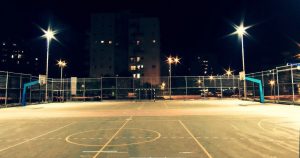 Traditional stadiums generally use 400W metal halide lamps or sodium lamps. Although they are cheap, they are not durable, and they consume electricity, have a short life span, and require frequent maintenance. Metal halide lamps: High light decay during use. The main drawbacks are the following two points.
Traditional stadiums generally use 400W metal halide lamps or sodium lamps. Although they are cheap, they are not durable, and they consume electricity, have a short life span, and require frequent maintenance. Metal halide lamps: High light decay during use. The main drawbacks are the following two points.
Defect 1: Light, dazzling, dazzling, dazzling and dazzling. People who play basketball only see a dazzling, dazzling light curtain, while basketball flying in the air is invisible and unclear. There is no way for the eyes to catch the basketball flying in the air, focus the imaging and track the basketball flight trajectory, and respond to the basketball trajectory.
Defect 2: When the glare energy of the basketball court lighting is large, the glare is serious. The harsh lighting of the basketball court can also cause visual pain. The greater the glare energy, the greater the visual tingling sensation.
2. LED flood light
New trend of campus basketball court lamps
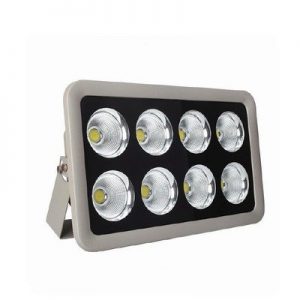 In response to the country’s request to establish an energy-saving and emission-reducing society, LED lighting has begun to enter people’s sight quickly. As an energy-saving lighting device, LED has received more and more attention. LED lighting is gradually replacing traditional metal halide lamps. LED lamps: As the reflector and glass in the lamp are contaminated and the light decays, the illuminance will decrease after a period of use, but its advantages far exceed other lamps. LED lamps have the advantages of long-term maintenance-free and low maintenance coefficient. With the development trend of LED lamps, LED lighting is quickly entering people’s sight. As energy-saving lighting equipment, LEDs have attracted more and more attention. For indoor courts, in other words, LED lamps and lanterns have also received widespread attention, and LED campus basketball courts are increasingly used. Many stadiums now use LED lamps. A 160W LED lamp can completely replace a 400W metal halide lamp, which saves more than half of energy. LED lamps not only save energy, but also have a lifetime of up to 50,000 hours. There is no flicker when the lamp is in operation, and it lights up immediately, greatly improving the enjoyment of playing.
In response to the country’s request to establish an energy-saving and emission-reducing society, LED lighting has begun to enter people’s sight quickly. As an energy-saving lighting device, LED has received more and more attention. LED lighting is gradually replacing traditional metal halide lamps. LED lamps: As the reflector and glass in the lamp are contaminated and the light decays, the illuminance will decrease after a period of use, but its advantages far exceed other lamps. LED lamps have the advantages of long-term maintenance-free and low maintenance coefficient. With the development trend of LED lamps, LED lighting is quickly entering people’s sight. As energy-saving lighting equipment, LEDs have attracted more and more attention. For indoor courts, in other words, LED lamps and lanterns have also received widespread attention, and LED campus basketball courts are increasingly used. Many stadiums now use LED lamps. A 160W LED lamp can completely replace a 400W metal halide lamp, which saves more than half of energy. LED lamps not only save energy, but also have a lifetime of up to 50,000 hours. There is no flicker when the lamp is in operation, and it lights up immediately, greatly improving the enjoyment of playing.
Why our LED lights are better than the competition?
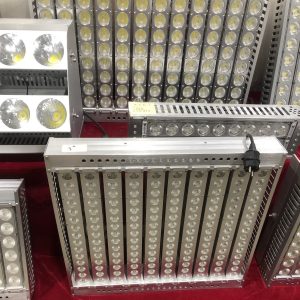 1. Higher Luminosity Level
1. Higher Luminosity Level
We install premium precise Optical Lens System in our LED Lamps. This special optical lens With more advanced Chips, allow our lumen levels to be twice as strong as the regular LED sets. On top of that, our R&D team developed a design that enhances a more centrally focused light-beam radiance. This not only allows for more efficient lumen distribution and lower consumption, but improves the Ground Lumen impact/coverage. All lights are available in 10, 25, 40, 60, 90 angles.
2. Modular design
We were the first company to introduce a modular design on LED Sets. This design allows customers to replace each individual lamp rather than having to extract an entire lamp section. In short, it leads to easier installation and maintenance.
 3. Open Design
3. Open Design
Again, we were the first company to develop this concept in our R&D lab. We are producing outdoor LED sets which, even though consist of a single frame, are not a standard block. I fact, our new sets have small and equidistant crevices that enable the wind to blow through the frame without causing too much pressure on the LED light set. This has a great impact on the LED lamps’ resistance, over time. The open design also contributed to a slim body and less weight structure, which is better for higher altitude installations.
4. Anti-Glare System
All our lights have a very developed anti glare system, which means’ people can look straight at the light for a while without feeling dazzled. This contrasts with many competitors, who don’t include the anti-glare in all their lights.
5. Great Resistance and Longer Life Span
All our lights are tested for 120 hours, in Our ageing room, before being shipped. Inside the ageing room, which has its temperature set at 45 degrees, the lights are turned on, unceasingly, for 120 hours. They are also turned upside, which causes the heat to rise. That is the way we test our heat dissipation system.
We also have lights that have been undergoing an extreme temperature cycle everyday for the last 2 years. They start by being submitted to a refrigerating chamber set at -40 degrees, for a period of 2 hours. Immediately after getting out of the refrigerating chamber, they are put into water tanks for another 2 hours. After they go to the aging room/heating room, while they keep being turned on for 16 hours. This cycle intends to simulate different weather conditions, such as freezing and humidity, rain and water leakage, and extreme dryness. We are sure that if the LED lights are passing these tests under radical and extreme situations, they would last much longer in normal environments.
Installation requirements for lamps
The principle of selecting college lamps is to meet the design’s light distribution requirements, the aesthetic appearance of the lamps and the building exterior materials and shapes, and the brand and quality safety and reliability as the primary reference, because this affects the project quality and future maintenance the most critical element.
When determining the arrangement and installation height of the luminaire, since outdoor sports use dark space as the background, it is impossible to see the light source in any direction without glare. Therefore, the glare in the direction of the game and the normal sight of the athlete should be reduced as much as possible. The light should not be too close to the area within the three-point line, otherwise it will strike the eyes of the ball.
Development of campus basketball court lighting
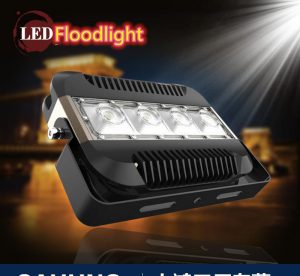 With the improvement of the level of sports, campus basketball has gradually begun to reach a global level. The lighting requirements of campus basketball courts have gradually spread. In order to increase the enthusiasm of the development of campus basketball, the lighting courts of basketball courts have also become popular. However, there are also various lighting installations; how to choose reasonable and suitable lighting has also become. A big problem for designers and builders.
With the improvement of the level of sports, campus basketball has gradually begun to reach a global level. The lighting requirements of campus basketball courts have gradually spread. In order to increase the enthusiasm of the development of campus basketball, the lighting courts of basketball courts have also become popular. However, there are also various lighting installations; how to choose reasonable and suitable lighting has also become. A big problem for designers and builders.
In basketball lighting, our lamps have no filament, no glass bubbles, are not afraid of vibration, and are not easily broken. The service life can reach more than 50,000 hours, and the overall cost is low. Our lamps have no electrodes and have a very long service life. They are very suitable for basketball court lighting needs. They are a good choice for high school basketball court lighting! Standard 5-person basketball courts generally use 400W metal halide lamps or sodium lamps. However, metal halide lamps are expensive, not durable, and consume a lot of power. They also have a long life and require frequent maintenance. With the continuous improvement of LED lamps, many basketball courts have replaced LED lamps today. A 120W LED court dedicated lamp can completely replace the 400W metal halide lamp, and the energy saving is close to 2/3. LED is a revolutionary third-generation lighting source. It is recognized as a high-tech, environmentally friendly, efficient, energy-saving, and green product. The country vigorously promotes energy-saving and emission reduction, and implements and supports the application of LED lighting products. LED stadium lights have no filament, no glass bubbles, are not afraid of vibration, and are not easily broken. The service life can reach more than 50,000 hours, and the overall cost is very low. LED stadium lights have no electrodes and have a very long service life. The ideal choice for modern campus basketball court lighting!
